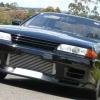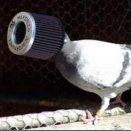Whats The Best Way Of Running In A New Engine Or A Rebuilt Engine
Announcements
-
Similar Content
-
Latest Posts
-
By thomasLait · Posted
Hey everyone, I recently bought myself a 2001 Nissan Stegea M35, and I've had a few issues that I had to fix, my car would start intermittently and I had a bad rocker cover leak, after a couple days of looking I finally found a part number that interchanges with the OEM starter as the OEM starters at $1300 and I can't afford that, this starter was only $270 and I replaced the start and still had the same issues, I posted a video asking for help online and it went very well, some guy said it was probably a bad ignition switch so I took my dash apart and turns out my ignition switch was half screwed in and was loose, once it was tightened it fired right up, I found a local place called "Boost factory" and they sold me a part of OEM Nissan rocker covers, they were $600 which was a shocker but I couldn't find them anywhere else, so I installed them and fixed my oil leak as the old rocker cover was cracked and warped, I now need to replace my boost air inlet hoses as they have some cracks. -
By drifter17a · Posted
I am being real ocd and do not want to make amy mistakes so appreciate all help provided. I am overly cautious so asking for opinion even if i know the answer few questions, 1.re tensioner, should spring be greased lightly? 2.tensioner has two washers , one pressure washer and other has recessed/ seat. I am going to put the recessed one facing tensioner where edges are cut out and pressure washer on top 3. my car has custom triger kit sold few years ago by guy who initially built the engine. I moved the crank gear and it moved in and out easy, only way to remove belt is to slide the crankshaft gear forward which I did. I have seen these being very tough to move , anything to do with my woodruff key? it has a crank sensor shown in purple which I assume reads from the 12 teeth position mounted to the crankcase gear 4. timing belt doesn’t have arrow stating front or back just a arrow which I think is direction of rotation . Do you agree? 5.i figured out why my crankcase cover was worn as there was no washer installed over the crankcase cover before the harmonic balancer was put in place. It is missing, anyone knows the part number? It looks like this https://justjap.com/products/genuine-nissan-crankshaft-timing-gear-rear-plate-washer-nissan-s13-ca18-a31-r32-rb20-r33-r34-c33-c34-c35-rb25?currency=USD https://tinypic.host/image/IMG-4535.382Zy2 https://tinypic.host/image/IMG-4537.382dSz https://tinypic.host/image/IMG-4534.382q4U -
By TurboTapin · Posted
CTIS (Central Tire Inflation System) has existed since the 80's. I'm looking into buying a Hummer H1 and they generally included it. -
My idle is set at 950rpm though - Moving the timing around 20 degrees is not really what I'd call a calm idle. That said... neither is chop, by definition. The LS ECU likes to adjust timing to hold idle as opposed to air. It'd work, but generally speaking there'd be a discrepancy in the base idle and the IACV would want to move the timing around anyway to maintain said idle. I think I'm just going to keep the timing steady anyway. Preserve my engine mounts. My aircon is now officially regassed. As the guy was reversing I noticed my reverse lights do not operate, along with my reverse cam. This is a bit distressing, because 100% of guides talk about which wire to connect to backup cams as "the goes with the [other color] wire". Often when doing conversions. Unfortunately the R34 colour wires aren't documented Unfortunately I had a T56 Magnum gearbox with it's reverse switch, which also isn't documented. Unfortunately there's definitely not documentation for people with both of these in the one car. Unfortunately I forgot. After many hours of this, I have a reverse cam and reverse lights again. The wire going through the trans tunnel to the reverse switch had broken. Upon inspection, it looks like this one wire had about 7 spade terminals and extensions in it.. for reasons I cannot possibly comprehend. I also spent the 750 hours required to clean up the wiring behind my head unit which now looks like this: This is a monumental improvement relative to what used to be there WRT triple gauges, head unit, traction control, wideband controller, and whatever the f**k OEM stuff still exists there in various states of connectivity/needed. Next step is to check in at the Exhaust shop to see/confirm how much clearance I have, to decide what mid mufflers or 'resonators' (which are just straight through, narrower mufflers) I can add and hopefully cut out a lot of exhaust leaks, pinhole, v-band or otherwise. But first step will be to 'take a look' before the next step.
-
By Dose Pipe Sutututu · Posted
Fark the AFM card and Nistune, Haltech Nexus S3, DBW, cruise control, flex fuel, dis dat.
-










Recommended Posts
Create an account or sign in to comment
You need to be a member in order to leave a comment
Create an account
Sign up for a new account in our community. It's easy!
Register a new accountSign in
Already have an account? Sign in here.
Sign In Now